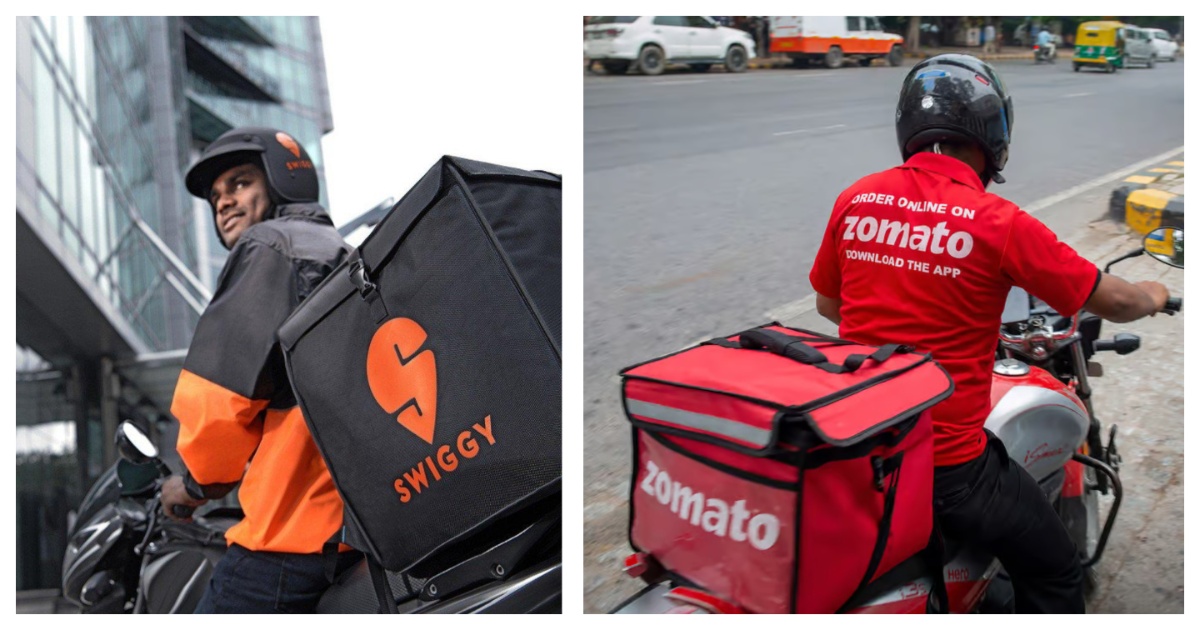India’s food delivery market has been a duopoly for several years, but it’s only now that customers are realizing what it really entails.
Hours after Zomato had raised its platform fee from Rs. 7 to Rs. 10, users have discovered that Swiggy has also hiked its platform fee to Rs. 10. Several users ordering on Swiggy have shared screenshots of a Rs. 10 platform fee appearing while placing orders. Like Zomato, Swiggy earlier charged a platform fee of Rs. 7.

This is at least the fourth time when Swiggy and Zomato have raised their platform fees in near unison. Swiggy had first introduced the concept of a platform fee April 2023, when the company had begun experimenting with a Rs. 2 platform fee for orders. Not long after, Zomato had introduced a platform fee of its own of Rs. 2 per order. Around August 2023, Zomato and Swiggy had raised their platform fee to Rs. 3 per order, and starting 1st January 2024, Zomato had raised its platform fee to Rs. 4 per order, and was followed immediately by Swiggy. In April 2024, Zomato and Swiggy both raised its platform fee to Rs. 5 per order, which was later raised to Rs. 7 per order. Now on the same day, both Zomato and Swiggy have raised their platform fees to Rs. 10 per order.
This appears to be a classic case of price collusion under a duopoly. Indian customers currently have only have two choices for ordering food online — Zomato and Swiggy. But it appears that the two companies are coordinating among themselves and simultaneously raising their platform fees. This leaves customers with no choice — there is no third platform they can turn to if they wish to avoid paying a platform fee which didn’t exist as a concept in food delivery until 18 months ago.
Now in a free market, companies are allowed to charge whatever they please from customers. But in many ways, India’s food delivery space hasn’t been a free market. For around a decade, both Zomato and Swiggy have been making hundreds of crores of losses and providing their services below cost price. This made it impossible for other companies to compete — some like TinyOwl had to shut shop, while others like Uber Eats ended up being acquired by Zomato. As such, there are now only two players left in the food delivery market, and they appear to be coordinating with each other to raise prices.
Interestingly, this practice was harshly criticized a month ago by Indian Commerce Minister Piyush Goyal. He had said that Amazon was making losses in India for decades with the aim of eliminating competition and then ultimately raising prices when it had pricing power. “When Amazon says we are going to invest a billion dollars in India and we all celebrate, we forget the underlying story that that billion dollars is not coming in for any great service or any great investment to support the Indian economy,” Goyal had said. “They made a billion dollars loss in their balance sheet that year. They have to fill in that loss. If you make 6,000 crore loss in one year, does that not smell of predatory pricing to any of you? Should this not be a matter of concern for all of us?” Goyal had continued.
It appears that Zomato and Swiggy have followed the same playbook. Both companies made losses for years and made sure that there were no other players left in the food ordering space in India. Once they’d settled on a duopoly, they seem to be raising prices in unison and leaving customers with no choice but to pony up the platform fee. It’s clear that Zomato and Swiggy clearly think that raising the platform fee will not materially impact demand for their services, but India’s Competition Commission could be very interested in the near-simultaneous price hikes by two large companies in a clear duopoly.
